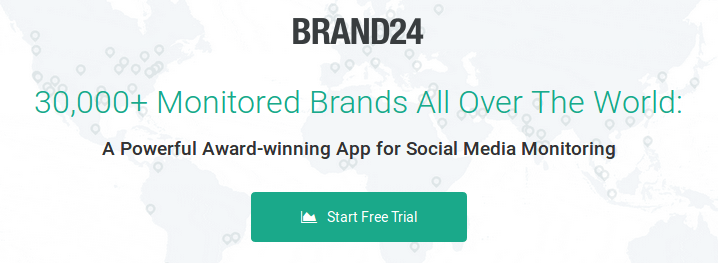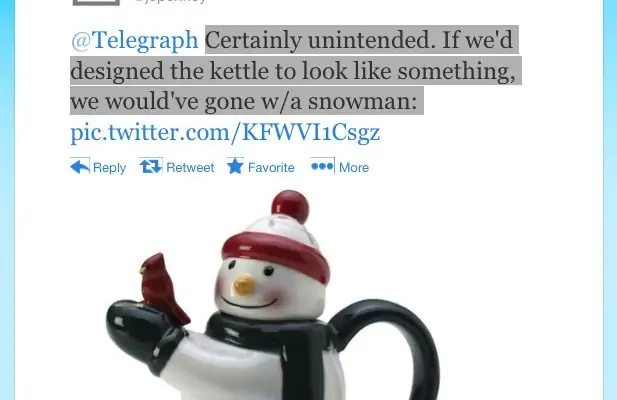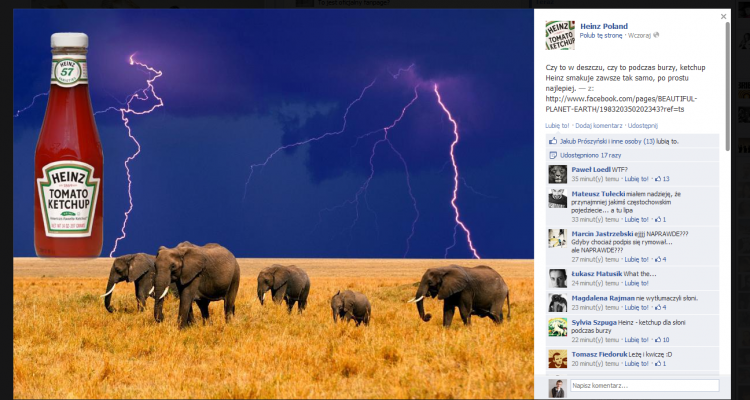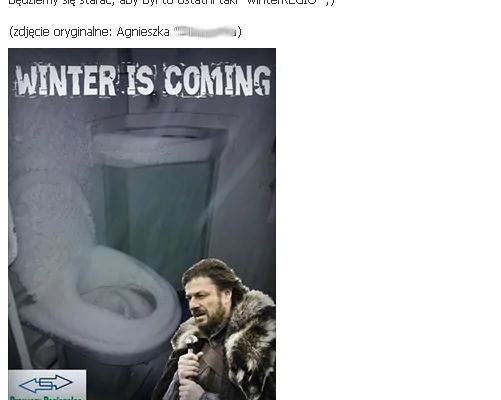ENTREVISTA: Monika Czaplicka sobre cómo ganar en una crisis de medios sociales
Hace poco charlamos con Monika sobre cómo evitar una crisis en las redes sociales y los aspectos positivos que podemos sacar de ella cuando finalmente nos veamos envueltos en una. Esto es lo que aprendimos:
Hay tantos temas en los que debemos centrarnos. ¿Por qué eligió tratar crisis en los medios sociales?
I think that, actually, I didn’t choose ‘social media crisis’. It chose me, because, it was almost 5 years ago, I was working in a social media agency and we were just laughing during a meeting about Nestlé.
They had a huge crisis because a mother had found a rat in her child’s food.

Estábamos bromeando, como, 'oh, sí, sería una gran idea escribirles (a Nestlé) y decirles que podemos ayudarles con esta crisis de los medios sociales'. Por supuesto, como agencia, no lo hicimos. Pero pensé: "Espera, es una buena idea", porque nadie trabaja en crisis de redes sociales y son muy populares.
Some time earlier, there was a big social media crisis with another company. So, I thought, ‘OK, let’s do something about this’.
So I made this fan page which is about social media crises, called Las crisis de las redes sociales estallan el fin de semana because as we all know, the weekend is when we all have some free time, and people who usually work (during the week) then go on social media.
So, there’s nobody in administration to work out a crisis and there are many people who are interested in them. So, I created this social media fan page and was writing about crises, and I thought, ‘OK, let’s write about something interesting, like case studies’.
So I started writing case studies. And I thought, ‘OK, that’s nice.
Let’s make an ebook about this.’ So I started writing an ebook (about) how to handle a social media crisis and so on.
After 130 pages, I thought ‘hm, that’s a bit too much for an ebook.’ So, I thought ‘OK, let’s make a book about it.’ I wrote to Michał Sadowski, who is, of course, the head of Brand24.
I asked him about making a book because he had just published one a few months earlier. He said ‘OK, no problem. I will put you in touch with my publisher,” and that’s how it was.
I published my book about handling social media crises and (that’s when) the fun began, because people started to know me and now I have around 27 or 28 thousand people visiting the social media crisis fan page and I have a group with a few dozen people who talk about it and discuss it and so on.
It’s a huge topic and I really love it, so I think that was a sign from social media: ‘Monika, do it!’
Creo que tienen una gran comunidad en sus medios sociales en relación con las crisis.
The fun part is that my friend wrote to me, that he’d been looking through some old presentations at his company, which I absolutely don’t know / never worked at, and so on.
One of the presentations was just about mecómo actuar me cuando haya una crisis en los medios sociales, o escribiré sobre ello... Me he reído mucho. Es horrible cuando la gente piensa que Yo soy creando la crisis de los medios sociales y que tienen que ocuparse de mí en lugar de la crisis.
Es una historia muy interesante. Dígame, ya que muchas marcas no tienen ningún plan sobre cómo reaccionar en caso de crisis en las redes sociales, ¿cuál es la causa principal de esta situación?
I think, as usual, we think that we are immortal. We think that no problems can harm us, and so on. So, usually, we think that we are safe and don’t need to prepare ourselves.
Of course, this is good thinking for somebody who is, like, ‘yeah, everything’s okay’. But then a crisis comes, approaches, or however you want to put it. It just happens, and they’re, like ‘oh, God, what do we do now?’
So, I think that companies should think about this beforehand, because it’s just like the flu. If you don’t do anything, you will probably get the flu. If you prepare yourself, eat vitamins, or get a flu shot, or whatever, you’ll probably be immune to this.
And it’s the same with social media crises. You can prepare so that you’ll be safe so even if something happens, you can react because you’ll know how to react. You don’t have (to go through) all the emotions because you’re prepared.
You can consult (others) for information. This doesn’t (necessarily) mean me, but everybody, even within your company. You can, of course, test the results and your ideas.
And, of course, you’ll have much, much, much more time because if you do a dry run, you can think about (possible) answers, you can prepare, for example, 3 different answers or statements, or whatever. It’s much better because you’ll just have to apply what you’ve already tried in a real situation.
This is easy peasy and much easier than working with all the media interest, all the people, the tension, and everything. I think it’s really, really better to prepare and if you think that social media crises don’t concern you, you’re just stupid.
Vale, lo he entendido. Mi siguiente pregunta sería cómo podemos evitarlo, pero en cierto modo, ya has respondido a esto. Aún así, quizá haya algo más que podamos hacer para evitar una crisis en nuestra empresa.
Por supuesto, porque como una empresa estadounidense medido (Altimeter Group), alrededor de 75% de las crisis de los medios sociales no se puede evitar. Así que hay una gran cantidad de situaciones que nunca se puede evitar una crisis de los medios sociales.
First of all, we can prepare, which is kind of obvious. Secondly, we need to be proactive, because usually a company thinks, ‘OK, let’s not interact with people so everything will quiet down and nobody will notice.’
But that’s usually what makes people even more angry. So, if you don’t reply, if you don’t do anything – interact with people, they just think that you’re avoiding them or not treating them like real people. We have to remember that our clients, like any other people, are our partners on the Internet.
So, if we don’t reply to their concerns, problems, questions, they’re just getting PO’d and becoming more and more angry. That’s usually what makes social media crises even bigger, which is something that companies usually don’t think about.
They think it’s making things more quiet, which is not true.
Por supuesto, también puedes pensar en reaccionar con rapidez porque, a veces, si reaccionas rápidamente a algunas preguntas, también ayudas a evitar una crisis en los medios sociales. Pero lo importante es que pienses bien las respuestas.
So, it’s not so much that a quick answer will be as good as a good answer in mellowing out what’s happening. Of course, it’s nice if you answer in a few minutes, in 15 minutes, or something like that.
But if you post something stupid, it’s kind of obvious that the situation will blow up and people will be more pissed off and more angry than before.
So I always say that it’s better to wait 5 minutes and think about what you’re going to write than it is to post something stupid – because then you’ll have to clean up afterwards and say you’re worry and so on.
OK, before I go to the next question, you said something interesting – that we should wait a little rather than reply very fast. I’m very curious: what is the time limit for us to answer a question during a social media crisis?
You said 5 minutes, but maybe sometimes it’s 15 minutes. How much time do we have to reply at the first sign of a crisis?
Generally, there is no good answer because when I asked the people who made this survey about social media and answering questions and all this stuff connected with service, surveyors said that, for example, they can wait a few hours on Facebook to get an answer.
Of course, it depends, because if somebody is really angry and they’re waiting for an answer now, you don’t have 3 hours to answer. So it’s rather 5 or 15 (minutes) than an hour.
Generally, I think people are willing to wait around an hour or 2 before they do anything on Facebook.
Of course it’s kind of different on Snapchat or Twitter because, of course, there you have to really react quickly and you have just a few minutes. I’m sure that if something is happening on Google+, this is irrelevant.
On LinkedIn, for example, people can wait even more than 2-3 hours, people can wait even half a day or something like that. I think that, generally, if we have no clue what to do, the easiest way to ‘reset the clock’ is to answer that we’ve seen your post, your concerns, and so on; we’re working on it.
You don’t have to write them anything concrete if you have no clue what to do, but then you show the client and other people who are watching, that you have seen this post.
Normalmente, si no tienes respuesta durante algún tiempo, la persona que escribió el post y todo el mundo que está mirando (tenemos que recordar que hay una enorme cantidad de gente que nos estará mirando y comprobando lo que nosotros -la empresa- estamos escribiendo a nuestro cliente), todo el mundo está comprobando si vimos el comentario, si empezamos a trabajar en ello, y claro, el problema es que normalmente las empresas no lo dicen (cuando ven o empiezan a trabajar en el problema).
Without any interaction, the person who wrote the comment has no clue about whether we’ve seen the post, or if we’re just avoiding it, or what’s happening.
So the easiest way to reset the clock is to wait, about, let’s say an hour, and then write ‘we’ve seen your post and we’re working on it. We’ll get back to you in 5 hours’.
Then people say ‘OK, I will wait’ and they’ll know how long they need to wait. It’s also better to avoid being angry and all the negative emotions around the topic ‘OK, they didn’t answer me in 2 hours. They hate me. They’re avoiding me.’ Or whatever.
OK, understood. And I think that you also part of my next question, which was about the first step that we should take during a situation of crisis.
So, I think it’s ‘react quite fast’ but what are the next steps?
Not quite. My first (piece of) advice is to go grab a coffee or tea or whatever you like. Because usually, as I’ve seen in many social media crises, people are so emotionally attached to the situation – on both sides:
the client who has a problem or issue, and the company. Usually, all the negative emotions are just crashing down on social media.
That’s why all – OK, maybe not all – but many situations are really badly handled, because they’re so emotional.
So, first things first: cool down. Chill out a bit and distance yourself from the situation, because if we’re very emotional, then usually, if somebody writes to us that our company sucks, we’re emotional because we feel like it’s about us and not the company. It’s really hard to detach yourself from the company where you work or which is yours.
Usually we react very aggressively because somebody’s attacking us. If we chill, take a step back, and see the bigger picture, we can write something which is more factual, something that’s really good rather than emotional.
The first step is really to step back and then of course we can think about – if we didn’t prepare for this beforehand – we can think about the answers. Of course, to prepare the answer, we have to have information.
We need to analyze who wrote the post, what it’s about, who interacted, and if the person who wrote the post is also the person who has the problem, because sometimes somebody else – a blogger, for example – is writing about somebody else or a client. We also have to check who the victim is, who’s writing about it, etc.
Por supuesto, seguimiento de las redes sociales tools are very useful at this stage because we can analyze if this topic (is restricted to) just this single post or if a blogger wrote a blog post, did he post it on many sites, or just on our page?
We can check the amount of damage that has been done.

A continuación, podemos preparar la declaración. Por supuesto, existe la regla de las "5 C" que puedes aplicar a la declaración:
En primer lugar, debe confiesa. Confess that you did wrong or confess that something didn’t go well within the product / service that you offered, and so on.
Of course, if the problem was not on your side, for example, if it was (due to) bad weather, you can write this. But you have to put some emotions there – good emotions, because a social media crisis is all about the bad emotions that somebody has.
Handling a social media crisis is about making bad emotions go away, so that there are good emotions between you, your clients, and all the people who are watching.
So, if you confess and say something showing empathy, you can (avoid) being seen as a company that is a bureaucratic monster, but you can be seen as a person who understands negative emotions.
For example, imagine you have something, like a computer. You’re working on it, and then it breaks down. You’re really angry because all the work you’ve been doing just got flushed down the toilet without any notice.
So, of course you start screaming at the company ‘your computers are shit’ and so on. If they start to say ‘we understand you’re angry because all the work you’ve been doing is dead,’ you feel much better because you feel like on the other side of the argument, there’s someone who understands your emotions.
Entonces, por supuesto, usted necesita tener algunos contrición because I know it’s hard to say ‘I’m sorry’ because usually we think that if we say we’re sorry, this means that we’re guilty.
But this really isn’t what it means. It’s all about the emotions. It’s all about the empathy that you have.
So, even if it is, for example, a company that we work with, like our transportation guy (whose vehicle) broke down at a stop, or something like that, we should say we’re sorry.
And do it within our company, rather than say ‘no, this wasn’t our company, we’re super. It’s just the delivery guy, the courier, the postman, or whatever.’
Así que discúlpate y sé sincero al respecto, porque en realidad, la mayoría de la gente sólo lo espera. No quieren nada más, solo quieren verte / oírte decir que lo sientes y que crees que lo que pasó estuvo mal.
Entonces necesita contrarrestar because, as I said, you can prepare and so on, but you can also counteract (to accusations that) you don’t write anything back – you can interact with the person and try to make him/her happier.
What you should write depends on the situation, but generally, all good emotions. Don’t write that the client is stupid or that he doesn’t know how to use your product or whatever else, because this also makes it more negative and angry.
Entonces puedes correcto the error. So, for example, if the computer is broken, you can send a new one. If the service wasn’t good, you can give some promotion or free stuff, and so on.
This makes the customer happy and her experience with our company better and better.
Por supuesto, al final compense because if someone had a negative experience with our company, it’s really, really important that we compensate to make it better. And, of course, we have to remember that it’s not about just one person.
There are probably thousands, or hundreds of people, who are watching, who are reading this post. The topic was probably just seen by our fans or friends of the person who wrote it… they don’t want to see that we’re perfect or that we never make mistakes, because all companies do. Products fail and services aren’t as good as they should be.
The most important thing is that people should know that if something is wrong, they can go to the company and they will interact in the proper way. So, they compensate for the problem and they make the experience good again.
I’m a huge fan of Gary Vaynerchuk, and he’s always saying ‘give, give, give, and make it about the people, not your company.’ It’s the same with social media crises.
So if you give, compensate, and say you’re sorry, there’s a 99% chance that you’re handling your social media crisis in a very good way.
Wow, that was a big dose of information. Very, very useful.
Since we’re talking about reactions, how brands react, can you share some examples for how companies have solved social media crises in the best possible way.
Sí, claro. La mejor manera es ver los ejemplos por nosotros mismos, así que también te enviaré algunas capturas de pantalla. Intentaré encontrar algunos ejemplos en inglés.

Por lo general, las crisis en las redes sociales pueden afrontarse de muchas maneras. Por ejemplo, si la crisis de las redes sociales es bastante pequeña y solo has cometido un pequeño error, puedes intentar divertirte y reírte de ello.

I’m thinking about a social media crisis where I really liked the way that it was handled. Heinz, the ketchup brand, had a problem because their graphic designer made something horrible. Imagine a Savannah with elephants.
There’s a storm there, and there’s a huge ketchup bottle.
The copy says something like ‘whether it’s raining or not, Heinz ketchup tastes the best.’ It generally makes you think ‘what the heck just happened? Was he on drugs or something?’
Of course, this isn’t a big social media crisis, but generally, people were saying ‘OK, you need to use a different social media agency’… things like that.

So, they (Heinz) thought ‘let’s delete this because it’s horrible for our brand’ and, of course, people on the Internet are people on the Internet… very specific… they were, like ‘ok, let’s make a fan page and tell Heinz “bring back the elephant!”’ Of course, the company was, like ‘sh**.
We deleted it and they want it back.’ So, they re-posted it but asked the company to help them and they created a contest. Of course, many people loved the idea about the ketchup, the elephant, the storm, and everything because it was so surreal.
So, they started making their own different graphics and pictures of elephants with Heinz… just anything you can imagine.
So, the company (Heinz) said ‘OK, that’s a good idea. Let’s create a contest.’ People posted their pictures, with ideas about where Heinz ketchup could be posted. Of course, there was also a 2nd part to the contest about creating copy to go with this picture of the elephant in the storm:
to create the best copy ever.
The contest was a huge success because it made people laugh and have fun. They were very abstract about the topic, and created things for Heinz, like ‘if you eat Heinz, you’ll have great ideas and it will inspire you’.
A partir de un post tonto, que al principio fue considerado con un "este es un post horrible", tuvieron la idea de centrarse en inspirarse y ser surrealistas. Este es un punto.
Of course, you have to remember that you should never attempt to mock the client. That’s a horrible thing to do because when somebody is being mocked, they feel bad.
There are many negative emotions, etc. If you’re trying to get a laugh out of something, make sure it’s just about the situation or about your company, and not about your fans or your clients.
En cualquier otra situación, basta con aplicar la regla de las "5 C": pedir perdón, confesar, etcétera. Esto debería ir bien porque se ha probado. Es la idea general para gestionar las crisis de los medios sociales en las relaciones públicas, y lo ha sido durante muchos años. Es una forma fácil y, digamos, segura.
Of course, you can also try to think about something unusual.
For example, I remember a brilliant situation.
We (our agency) were working with a train company and somebody posted a picture of our train toilet, which was absolutely white. It was all snowy and icy. It looked really horrible.

Of course, the question was ‘what happened?’ We got the answer that somebody left the window open and the wind had been very cold, around -20 or something like that… and everything froze.
We couldn’t reply to the client by saying ‘sorry, somebody opened the window and nobody closed it. You’re stupid. Go away.’
So, we were thinking ‘what the heck should we do?’ Fortunately, for us, it was the beginning of the Game of Thrones. Some of our fans started to make some mock-ups and mash-ups using Game of Thrones with ‘brace yourself: winter is coming’.
So we took one of those pictures and posted it, saying ‘we’re sorry. This shouldn’t have happened’, etc., and the typical things you have to say to handle a crisis.
Because we used this picture with the caption ‘brace yourself: winter is coming’, we also created a ‘smile’ around the name of the company because it’s called Inter-region, but we put Winter-region.
People started to laugh and took it much better than we usually see.

En Polonia se odia mucho a las compañías ferroviarias, así que estábamos muy preocupados. Utilizamos la cultura pop y nos divertimos un poco, y la gente nos dijo 'no pasa nada'. Todos estábamos en la misma situación, porque entonces hacía mucho frío. Creo que ahora mucha gente se da cuenta de que hay que tener más cuidado con las ventanillas del tren.
Generally, you just have to turn negative emotions into positive ones and try to make the situation as nice as possible.
Of course, you can also sometimes be more edgy. I remember Durex had this problem where one of their bloggers was doing a test with one of their condoms and, of course, the condom broke.
In Poland, the reaction was like ‘oh my God. Are we going to end up with a huge number of babies?’

The company answered by saying that the test was cool and they really liked the idea of testing the condoms, but they usually test around 300, not just 1, and that you shouldn’t test it with champagne bottles because the bottle can be sharp so it can break the condom.
Of course, (they mentioned that) you can hold about 30 liters of sperm in the condom, but the force from the bottle opening is very different than with sperm. They wrote everything in a humorous way, with the message that the test was cool but needs to be improved.
They didn’t say anything like ‘you’re stupid. You don’t know how to do the test properly.’
They were, like ‘we know that from our tests, the condoms should be as tough as (the rubber from) a car tire. They should be really strong yet you shouldn’t be able to feel anything. Of course, they’re trying to make it as thick, as slim, and as nice as possible.
En general, no trataron de crear ninguna emoción negativa en torno a que la prueba fuera mala. En su lugar, afirmaron de forma amable que la prueba estaba bien, pero que debía hacerse mejor.
Esa es la idea principal. Crea buenas emociones e intenta ser lo más abierto posible.
Creo que es una muy buena conclusión para esta entrevista. Creo que no podría haberlo hecho mejor.
Una crisis en las redes sociales puede ser una forma de ganarse a la gente, de profesionalizar tu empresa y de tener más éxito. Si lo haces bien, con emociones positivas, saldrás ganando.
OK, es un muy buen mensaje para terminar esta conversación. Muchas gracias por su tiempo y por toda la información que nos ha proporcionado.
Artículos relacionados
Lo más leído
Brand Monitoring: Tools & Guide for 2026
Brand Awareness Strategy [The Ultimate Guide for 2026]
El mejor rastreador de hashtags AI y otras herramientas de seguimiento de hashtags [2026]
Social Media Reach: How to Measure & Improve It in 2026?
Herramientas de análisis de X (Twitter): Las 10 mejores para probar en 2026
Sentiment Analysis: What is it & Why do You Need it in 2026?
Share of Voice: Definition, Calculation, Tools [2026 Guide]
Brand Reputation Management: 6 Expert Tips for 2026
Guía completa para el análisis de redes sociales con IA [2025]
Cómo ver cuántas veces se ha utilizado un hashtag en X (Twitter)
Inicio Escucha social
Consigue la versión de prueba de Brand24 y empieza a escuchar las redes sociales como un profesional.

